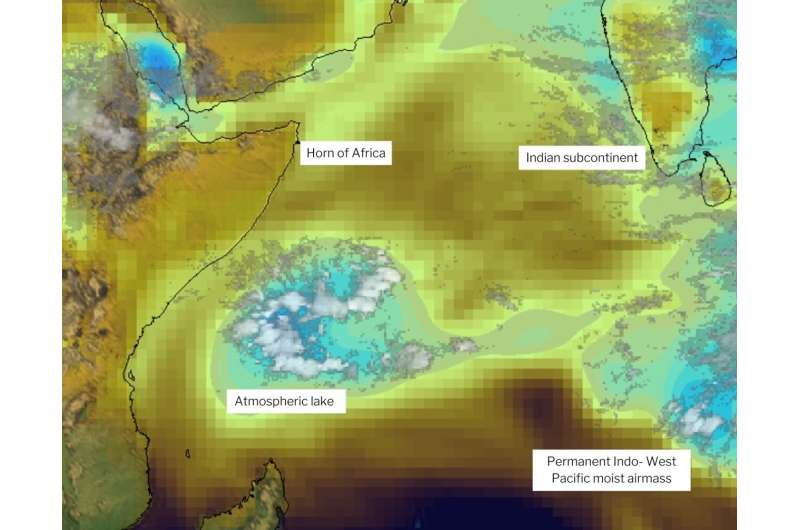Climate change isn’t the only major crisis facing the world. We’re in the middle of a mass extinction, and we’re missing all of our biodiversity targets.

OCTOBER 2021 WAS an important month for crisis meetings. There was the big one, COP26, where decisionmakers descended on Glasgow to spend two frenetic weeks figuring out how to achieve the goals set out in the Paris Climate Agreement and keep global heating under 1.5 degrees Celsius. But earlier that month, a different crisis meeting took place that almost completely slipped below the radar—a meeting that will have huge implications for the future of every living thing on our planet.
The world is in the middle of a biodiversity crisis. Birds, mammals, and amphibians are going extinct at least 100 to 1,000 times faster than they did in the millions of years before humans began to dominate the planet. In the last 500 years alone, human activity has forced 869 species into extinction, according to data from the International Union for Conservation of Nature (IUCN). If things continue at their current rate, we’re on track for a sixth mass extinction—the first since that infamous dino-ending catastrophe 65 million years ago, which sparked an extinction event that eventually knocked off 76 percent of all species.
This time around, there’s no giant asteroid to pin the blame on. Humans have transformed the planet, turning half of all habitable land into agriculture and replacing wild animals with livestock. In the oceans, we are continuing the trend our ancestors began on land tens of thousands of years ago—hunting large species to the point of collapse and leaving mostly smaller species behind. In other words, biodiversity is in desperately bad shape.
“There is a gradual realization that there are two big crises going on, and we should better act on both of them,” says Almut Arneth, a biologist at the Karlsruhe Institute of Technology in Germany. On October 11, the delegates at the United Nations Biodiversity Conference had gathered virtually to do just that. They were trying to agree on a new set of global targets that can arrest the dramatic drop in global biodiversity—a Paris Agreement-style plan to reset our relationship with nature. These targets will be debated and finalized at a second meeting due to take place in Kunming, China, in April 2022.
The last time the parties of the UN Convention on Biological Diversity got together to set a global biodiversity agenda was in Japan in 2010, where they came up with the Aichi targets, a set of 20 goals aimed at reducing a range of environmental harms including habitat loss, overfishing, and pollution over the subsequent decade. But those goals were difficult to measure, and countries weren’t required to report their progress in any definite way. In September 2020, a UN report revealed that none of the Aichi targets were fully achieved, and only six of them were partially achieved.
The Kunming meeting is an attempt to get the world’s biodiversity targets back on track. “It’s a decisive moment,” says Henrique Miguel Pereira, head of the Biodiversity Conservation research group at the German Centre for Integrative Biodiversity Research. The first draft of what is called the Post-2020 Global Biodiversity Framework was released in July and sets out four major goals to be achieved by 2050, along with 21 more specific targets that will be assessed in 2030. While the Aichi targets tended to be a little vague, these post-2020 targets add some numerical pizzazz.
The first goal—which has several different elements—includes commitments to cut extinctions by a factor of 10 by 2050, and to halt or reverse the current increase in the extinction rate by 2030. Other targets include reducing the introduction of invasive species by 50 percent and halving fertilizer runoff from farms by 2030. “Now we have these targets that will dominate the agendas of the countries and the international agenda for the next 10 to 15 years,” says Pereira.
But a big headline target like reducing extinctions to 10 percent of their current levels raises some tricky questions. For a start, we’re not even completely sure how many species are going extinct at the moment. Extinction rates vary widely between different groups of species. Amphibians, for example, are disappearing at a higher rate than mammals, which are disappearing at a higher rate than birds. The IUCN has evaluated the extinction status of 138,374 species, but that’s only a fraction of the more than 2.1 million animal, plant, fungus, and protist species that have been described by scientists. There are millions more undescribed organisms out there, so species could be going extinct before we’re even aware they exist. And if you take into account species that may vanish in the near future, the trajectory of the extinction rate may be even higher than current estimates suggest.
“People want to have a simple metric, and it’s incredibly difficult with biodiversity,” says Pereira. In 2020 the ecologist Georgina Mace—who helped design the criteria behind the IUCN’s Red List of threatened species—suggested that the target should be to keep extinctions of described species to below 20 per year over the next 100 years. But since we don’t know how many undescribed ones are going extinct, this could end up overlooking species that we don’t yet know about.
Another option is to look at a different indicator of biodiversity, such as the Living Planet Index. Developed by the World Wildlife Fund in 1998, the LPI reports average changes across a number of vertebrate populations, but they don’t tell us anything about how many species are going extinct. The LPI was used to measure progress towards the Aichi targets, but it has been criticized for its relatively narrow focus on a small number of species. According to Basile van Havre, who cochairs the working group behind the post-2020 framework, the precise metric behind the 10-fold reduction target will be discussed ahead of the Kunming conference, at a meeting in January.
Of course, if climate change has taught us anything, it’s that having a target to hit is only the start of the battle. Global greenhouse gas emissions still haven’t peaked, and even taking into account current net zero targets, the world is facing about 2.1 degrees of warming by 2100 compared to preindustrial levels. This is above the Paris Agreement’s goal to limit temperature increases to no more than 1.5 degrees, and it will lead to a world where sea levels are 20 inches higher than in 1995 and extreme heat events that used to happen once every 50 years will happen more than once every 10 years. “You can set as many targets as you want. And you can sell them with nice headline statements,” Arneth says. “The important thing is, are you actually doing something to achieve them?”
One proposed target in the framework that has already gained some momentum is “30 by 30”—ensuring at least 30 percent of land and sea areas are under conservation by 2030. A group of 71 countries has already banded together to make sure that the new framework includes a target to turn at least 30 percent of the ocean into protected areas in the next nine years. But this won’t be easy. The majority of protected ocean areas are close to shorelines, within the jurisdiction of the closest country. But nearly two-thirds of the ocean is beyond these areas of national jurisdiction, and so far only a little over 1 percent of that area is protected. Deciding who is responsible for protecting these remote and poorly understood areas will be another challenge that delegates at Kunming will have to reckon with.
Although there are many thorny problems still on the table, there are signs that we can turn the biodiversity crisis around. Many of the world’s biodiversity hot spots are also potent carbon sinks, which will mean that efforts to keep carbon locked up will also preserve crucial habitats. There has also been considerable success bringing back wild animals that had been driven away from particular countries, or even to the brink of extinction, thanks to human activities. The European bison was extinct in the wild until the 1950s, when projects to restore the huge mammal to its natural habitat got underway. Now there are wild populations in Germany, Switzerland, Poland, Lithuania, and Belarus.
A 2011 study commissioned by the Zoological Society of London found that European brown bears, lynx, wolverines, grey wolves, and golden jackals were all expanding their range across the continent, thanks to rewilding efforts. Although northern and western Europe don’t usually feature highly on lists of the world’s most biodiverse spots, the region is an important test of whether ambitious conservation aims can coexist with dense human populations. Europe has some of the most intensively used lands anywhere on the planet—around 80 percent of the continent’s surface is used for settlements, farming, and infrastructure.
This can lead to problems. In 2006 a wild bear wandered onto German soil for the first time in 170 years. The bear—christened Bruno by the press—was part of a conservation program to reintroduce the animals into the Alps in northern Italy. But German authorities turned against Bruno after he started killing sheep and rabbits, and he was eventually shot by a team of Finnish hunters on the orders of the Bavarian Environment Minister. (“It's not that we don't welcome bears in Bavaria. It's just that this one wasn't behaving properly,” said an official at the time of the killing.) Bruno’s body later became the subject of a diplomatic row after Italian authorities demanded it be returned to Italy, claiming that it belonged to the state. The Bavarian government disagreed and opted to stuff Bruno’s body and put it on display in Munich’s Museum of Man and Nature, where it remains to this day.
How Europe handles rewilding will provide an important example to the rest of the world, says Pereira. “If we cannot handle wildlife and wilderness in Europe, you cannot really say other countries have to protect their wildlife,” he says. There are parallels to the climate crisis here too. Greenhouse gas emissions from the European Union peaked in 1990, but unless leaders there can support other countries in cutting their own emissions, the world will have no chance of hitting net zero by 2050. For international targets to succeed, countries with the resources to deliver conservation goals will have to start by showing they can take them seriously within their own borders.
Pereira is hopeful that the tentative signs of success from Europe’s rewilding schemes show that it is possible to turn the biodiversity narrative around. “My kids already have much more wildlife in their lives,” he says. “And my grandkids probably will have even more biodiversity if we continue to manage it well.”







 Ms. Keleher and former Gov. Ricardo A. Rosselló discussed uses for 60 shuttered schools in San Juan, P.R., in 2018
Ms. Keleher and former Gov. Ricardo A. Rosselló discussed uses for 60 shuttered schools in San Juan, P.R., in 2018
/https://www.thestar.com/content/dam/thestar/business/2021/12/18/bruce-lintons-next-big-bet-magic-mushrooms/david.jpg)

